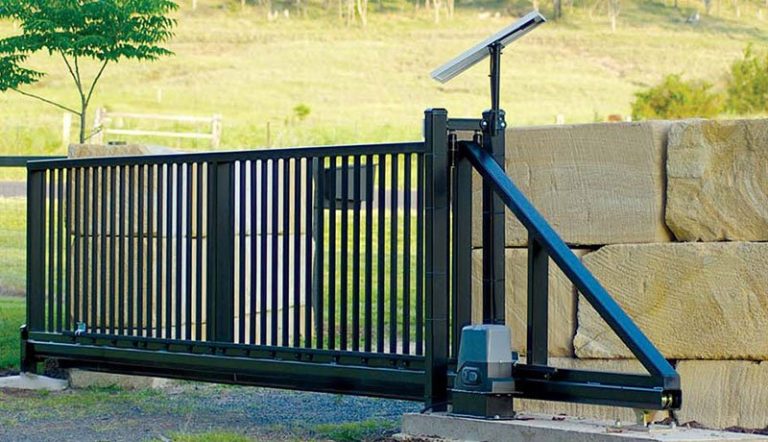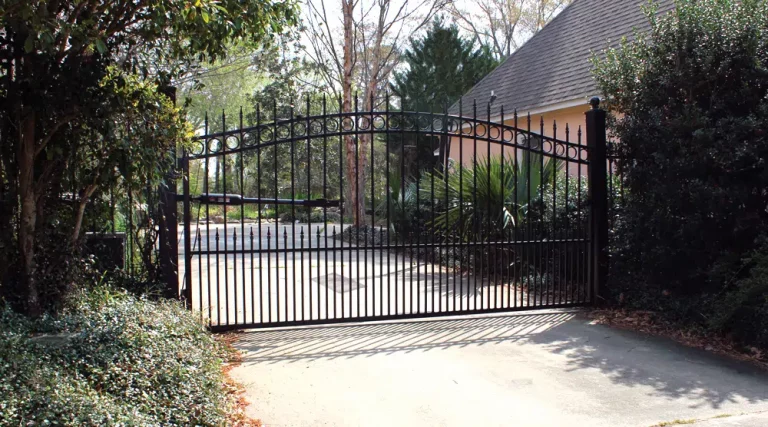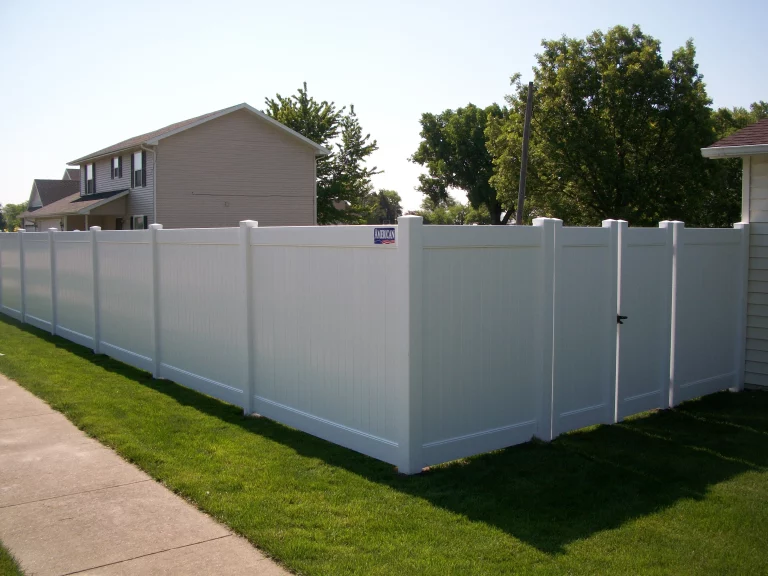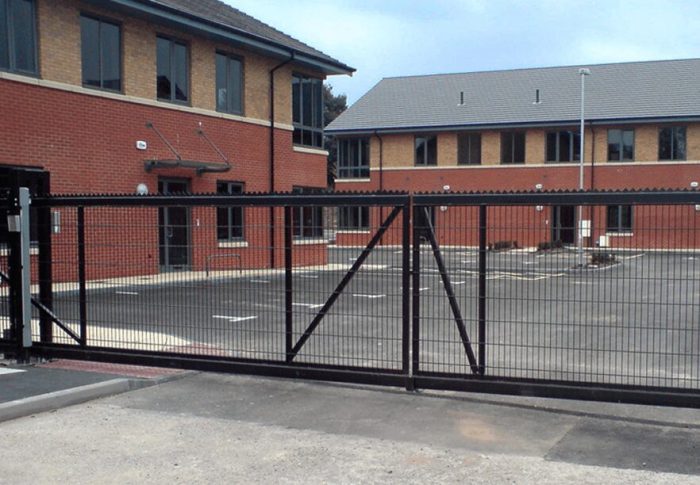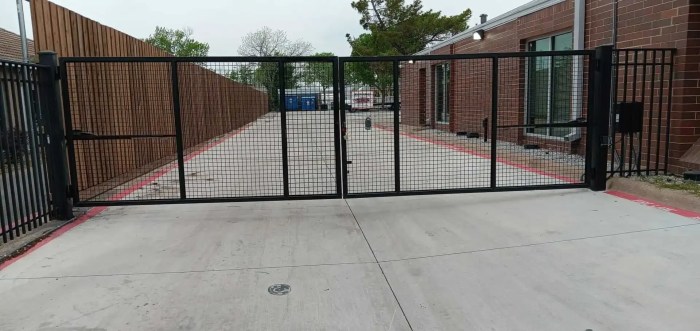Crowd Control Safety Barriers A Comprehensive Guide
Crowd control safety barriers are essential for managing large gatherings and ensuring public safety. From bustling concerts to peaceful protests, these barriers play a crucial role in directing pedestrian flow, preventing overcrowding, and creating safe escape routes in emergencies. This guide delves into the various types of barriers, their effective placement, relevant safety regulations, and best practices for emergency response, equipping you with the knowledge to create secure and well-managed events.
We’ll explore different barrier materials, their strengths and weaknesses, and how to choose the right type for your specific needs. We’ll also cover strategic placement techniques, addressing crucial aspects like barrier height, spacing, and the creation of clear entry and exit points. Understanding crowd dynamics and potential risks, like surges and stampedes, is key, and we’ll examine how barrier design can effectively mitigate these dangers. Finally, we’ll cover essential safety regulations and emergency procedures to ensure the overall safety of attendees and personnel.
Types of Crowd Control Safety Barriers
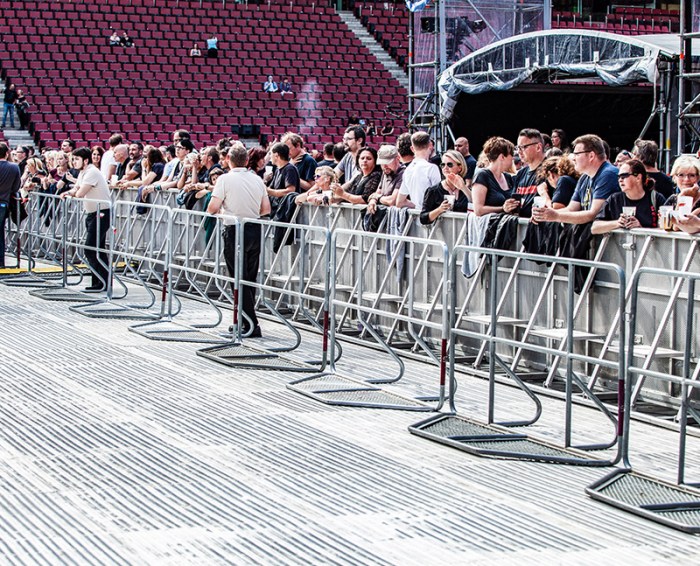
Source: eps.net
Choosing the right crowd control barrier is crucial for ensuring safety and managing large gatherings effectively. The type of barrier you select will depend on several factors, including the size and type of event, the expected crowd size, the terrain, and your budget. Different barriers offer varying levels of durability, portability, and visibility.
Crowd Control Barrier Materials and Their Properties
Several materials are commonly used in the construction of crowd control barriers. Each material presents its own set of advantages and disadvantages concerning cost, durability, portability, and visibility.
Metal Crowd Control Barriers
Metal barriers, often made of steel or aluminum, are known for their strength and durability. Steel barriers are exceptionally robust and can withstand significant impact, making them suitable for high-risk events or areas with potential for vandalism. However, they are typically heavier and less portable than other options. Aluminum barriers offer a lighter alternative, while still maintaining a good level of strength and durability. They are also often more expensive than plastic or retractable barriers. The high visibility of metal barriers, especially when painted bright colors, is a significant advantage.
Plastic Crowd Control Barriers
Plastic barriers are a popular choice due to their lightweight and relatively low cost. They are easy to transport and set up, making them ideal for temporary events or situations requiring frequent relocation. However, plastic barriers are generally less durable than metal options and can be more easily damaged or broken under stress. Their visibility can also be a concern, especially in low-light conditions, unless they are brightly colored or equipped with reflective elements.
Retractable Crowd Control Barriers
Retractable barriers offer a space-saving solution, particularly useful in areas where storage space is limited. They are typically made of a durable material like metal or plastic, housed in a casing that allows for easy extension and retraction. While convenient, retractable barriers can be more expensive than other types and may require more maintenance. Their visibility is usually good, as the extended barrier is typically brightly colored.
Temporary Crowd Control Barriers
The term “temporary” encompasses a range of materials and designs, including those made from plastic, metal, or even fabric. These barriers are designed for short-term use and are often easily assembled and disassembled. Portability is a key advantage, but durability and visibility can vary significantly depending on the specific design and material. Cost is generally moderate.
Comparison of Crowd Control Barrier Types
| Material | Weight (Approximate) | Height (Approximate) | Typical Applications |
|---|---|---|---|
| Steel | Heavy | 3-4 feet | High-security events, construction sites, large-scale concerts |
| Aluminum | Medium | 3-4 feet | Medium-sized events, trade shows, temporary crowd management |
| Plastic | Light | 2-3 feet | Small events, indoor use, temporary crowd control |
| Retractable (Metal/Plastic) | Medium to Light | 3-4 feet | Retail spaces, entrances, and areas requiring space-saving solutions |
Barrier Placement and Design Strategies
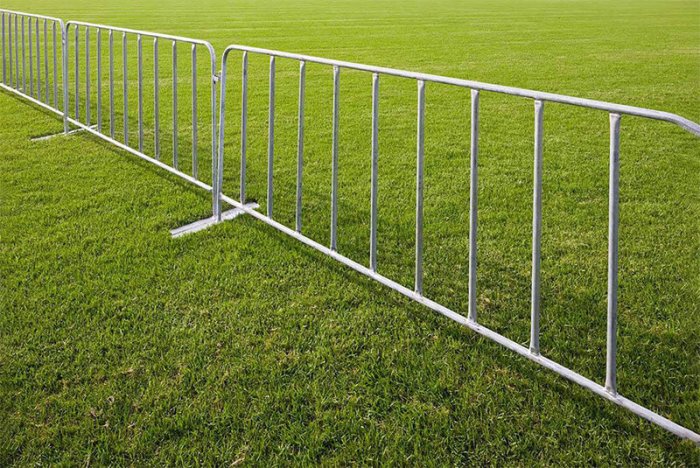
Source: com.au
Strategic placement of crowd control barriers is crucial for ensuring the safety and smooth flow of people in various high-density settings. Effective barrier placement minimizes risks, improves emergency response capabilities, and enhances the overall experience for attendees. This involves careful consideration of several factors, including crowd density, event type, and the specific layout of the venue.
Barrier placement significantly impacts crowd management. Incorrect placement can create bottlenecks, restrict emergency access, or even exacerbate panic situations. Conversely, well-planned barrier systems can guide pedestrian traffic, prevent overcrowding, and provide clear pathways for emergency personnel. The height and spacing of barriers are equally important, influencing the effectiveness of the crowd control strategy.
Barrier Height and Spacing Considerations
Barrier height should be appropriate for the anticipated crowd density and the potential for breaches. Taller barriers offer more robust crowd control, especially in situations where large crowds or potentially aggressive behavior are expected. However, excessively high barriers can create a sense of confinement and potentially impede visibility, which may itself increase anxiety. Spacing between barriers needs careful consideration. Closely spaced barriers can restrict movement and create choke points, while widely spaced barriers may not provide sufficient crowd control. The ideal spacing depends on the anticipated crowd density and the type of barrier used. For instance, a concert with a high-energy crowd might require closer spacing than a more sedate event like a political rally. In high-density situations, shorter spacing might be needed, but in lower-density situations, slightly more space could be beneficial. Always consider the potential for people to climb or push against the barriers.
Optimal Barrier Placement in High-Traffic Areas
Imagine a large outdoor concert venue. Entry points should have multiple, clearly marked lanes, each funneled by barriers to manage the flow of attendees. Barriers should be strategically placed to guide people toward designated entry gates, preventing congestion at the entrance. Inside the venue, barriers should create clear pathways leading to different sections, restrooms, and concessions. These pathways should be wide enough to accommodate the expected crowd flow, especially during peak times like intermission or the end of the event. Emergency exits should be marked and unobstructed by barriers. These exits should have easily removable barriers or designated gaps for rapid evacuation in case of an emergency. Within the crowd areas, barriers should be placed to create defined sections or zones, preventing overcrowding and ensuring that there are safe spaces to move and breathe. Finally, a perimeter barrier should completely enclose the venue, controlling access and creating a secure environment. This visual representation emphasizes clear pathways, defined zones, and easy access to emergency exits. The goal is to create a system that is both effective in controlling the crowd and safe for everyone involved.
Regulations and Safety Standards
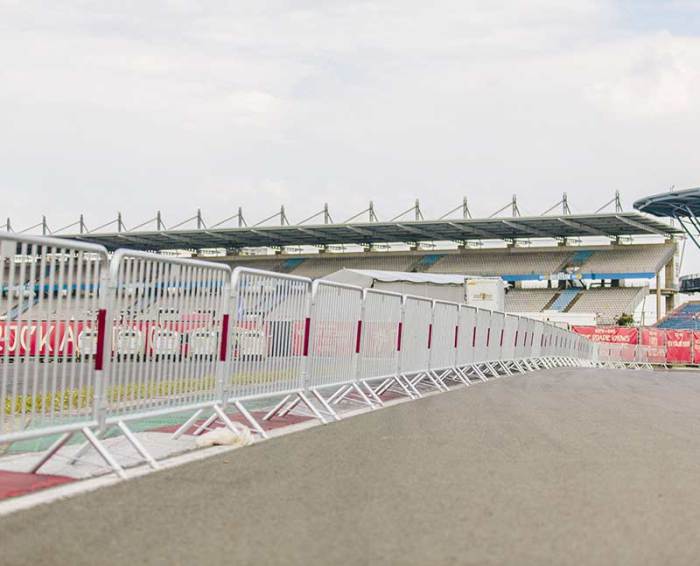
Source: eps.net
Keeping crowds safe requires more than just setting up barriers; it demands adherence to specific regulations and standards. These rules vary depending on location, but the core principle remains consistent: preventing accidents and injuries through responsible barrier usage. Understanding these regulations is crucial for event organizers, businesses, and anyone responsible for managing crowds.
Relevant Safety Regulations and Standards
Many jurisdictions have specific codes and standards governing crowd management, including the use of barriers. These regulations often cover aspects like barrier materials, construction, placement, and maintenance. For instance, OSHA (Occupational Safety and Health Administration) in the United States offers guidelines related to workplace safety, which often indirectly apply to crowd control in public and private settings. Similarly, many countries have their own national or regional standards organizations that publish relevant documents. These standards often incorporate international best practices. Failure to comply with these regulations can result in fines, legal action, and, more importantly, serious injuries or fatalities.
- Building Codes: Many building codes incorporate sections on crowd management and safety, specifying requirements for barrier materials and placement in high-traffic areas. These often relate to emergency exits and pathways.
- Event Permits: When organizing large events, obtaining permits often necessitates demonstrating compliance with crowd safety regulations, including the appropriate use of barriers.
- Occupational Safety and Health Administration (OSHA) Guidelines (USA): While not specifically focused on crowd control barriers, OSHA’s general industry standards regarding fall protection, hazard communication, and emergency action plans are relevant in contexts where barriers are used to manage worker safety during crowd events.
- International Organization for Standardization (ISO) Standards: ISO publishes standards related to various aspects of safety, including those indirectly applicable to crowd management and barrier use. These are often adopted or referenced by national standards bodies.
Examples of Incidents Resulting from Inadequate Barrier Use
Inadequate barrier use can have devastating consequences. Several high-profile incidents highlight the importance of proper planning and compliance. For example, at a crowded concert in 2010, a surge of the crowd overwhelmed poorly secured barriers, resulting in injuries and fatalities. The investigation revealed that insufficient barrier strength and inadequate spacing between barriers contributed to the severity of the incident. In another case, a poorly maintained barrier collapsed during a festival, causing injuries to several attendees. The investigation determined that the barrier’s structural integrity had been compromised due to neglect and lack of regular inspections.
Key Compliance Requirements for Barrier Installation, Maintenance, and Usage
Successful crowd management hinges on diligent adherence to safety guidelines throughout the barrier’s lifecycle.
- Barrier Selection: Choose barriers appropriate for the anticipated crowd size, density, and potential hazards. Consider factors such as barrier material strength, height, and stability.
- Installation: Barriers should be installed correctly, firmly anchored to the ground or securely interlocked to prevent movement or collapse. Ensure proper spacing and alignment to maintain clear pathways and emergency exits.
- Maintenance: Regular inspections are crucial to identify and address any damage or deterioration. Damaged barriers should be repaired or replaced promptly. A schedule of inspections and maintenance should be documented.
- Usage: Barriers should be used strategically to guide crowd flow, manage bottlenecks, and protect vulnerable areas. Trained personnel should be responsible for their deployment and management. Signage should be clear and visible, indicating designated entry and exit points.
- Emergency Procedures: Develop and implement clear emergency procedures that include protocols for barrier removal or repositioning in case of emergencies.
Materials and Durability

Source: aspirantsg.com
Choosing the right materials for crowd control barriers is crucial for ensuring both their longevity and effectiveness in protecting people. Different materials offer varying levels of durability, impacting their lifespan and requiring different maintenance approaches. The material also significantly affects the barrier’s visibility, a key factor in accident prevention.
The durability and lifespan of crowd control barriers are heavily influenced by the chosen material and the environmental conditions they face. Exposure to extreme temperatures, prolonged rainfall, and intense UV radiation can all degrade materials over time, leading to reduced strength and potentially compromising safety. Understanding these factors is key to selecting appropriate barriers for a given location and climate.
Barrier Material Properties and Lifespan
Let’s examine the performance of common barrier materials under various conditions. Steel barriers, for instance, are robust and can withstand significant impact. However, they are susceptible to rust and corrosion in humid or salty environments, requiring regular maintenance like painting or galvanizing to extend their lifespan. Plastic barriers, often made from polyethylene or polypropylene, are lightweight and relatively inexpensive. They are generally resistant to corrosion but can become brittle and prone to cracking under extreme cold or prolonged exposure to UV radiation. Aluminum barriers offer a good compromise – they’re lightweight, relatively strong, and corrosion-resistant, but may dent more easily than steel. Wooden barriers, while aesthetically pleasing in some settings, are susceptible to rot, insect infestation, and weathering, limiting their lifespan and requiring frequent maintenance.
Maintenance Procedures for Different Barrier Types
Regular maintenance is essential to prolong the lifespan and maintain the safety of crowd control barriers. The specific procedures vary depending on the material. Steel barriers may need repainting every few years to prevent rust, while plastic barriers may require cleaning to remove dirt and debris that could obscure visibility. Wooden barriers need regular inspections for signs of rot or insect damage and may require treatment with preservatives. Aluminum barriers typically require less maintenance but should be inspected for dents or damage that could compromise their structural integrity. A regular maintenance schedule, including visual inspections and necessary repairs or replacements, should be implemented to ensure ongoing safety and effectiveness.
Material Choice and Barrier Visibility
The color and reflectivity of barrier materials significantly impact their visibility. Brightly colored barriers, particularly those with reflective elements, are more easily seen, especially in low-light conditions. This improved visibility helps prevent accidents by making the barriers more noticeable to pedestrians and vehicles. For example, high-visibility orange or yellow barriers are often preferred over darker colors. The use of reflective tape or paint can further enhance visibility, particularly at night or in areas with limited lighting. Choosing materials and colors that maximize visibility is a critical factor in designing safe and effective crowd control systems.
Crowd Dynamics and Barrier Interaction: Crowd Control Safety Barriers
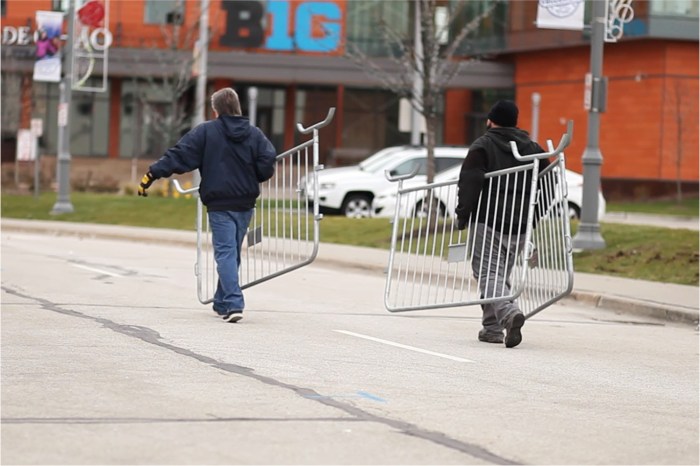
Source: unitedrentafence.com
Understanding how crowds behave and how their movement interacts with barriers is crucial for effective crowd management. Crowd density and behavior significantly influence a barrier’s effectiveness, and poorly designed or poorly placed barriers can exacerbate dangerous situations. Effective barrier design considers these dynamics to minimize risks.
Crowd density plays a major role. In low-density crowds, barriers primarily serve as guides, directing pedestrian flow. However, as density increases, the pressure on barriers rises exponentially. High-density crowds exhibit emergent behavior; individual actions become less predictable, and the collective movement can become unpredictable and potentially dangerous. This is especially true in situations with limited space or sudden changes in crowd direction.
Barrier Design to Mitigate Crowd Surges and Stampedes
Barrier design directly impacts a crowd’s interaction with them. Robust construction is essential to withstand the force of a surging crowd. Materials should be strong enough to prevent collapse under pressure. The height and spacing of barriers are also important considerations. Taller barriers offer better protection against surges, while appropriate spacing prevents the creation of bottlenecks that can funnel crowd movement into dangerous concentrations. Furthermore, the barrier’s design should prevent people from climbing over or easily pushing it over. Features such as angled tops or strategically placed reinforcements can enhance stability and safety. The design should also consider the ease of emergency access and egress. Quick-release mechanisms or strategically placed gates can allow for swift evacuation in case of an emergency.
Scenario: Potential Crowd Surge and Barrier Management
Imagine a large concert ending. The crowd, numbering several thousand people, is exiting through a narrow passageway. As the main exit becomes congested, a surge begins to build. Strategically placed barriers could mitigate this risk. First, wider barriers positioned at the concert exit would help distribute the exiting crowd flow, preventing a bottleneck from forming. Second, shorter, more flexible barriers could be used to channel the crowd flow through multiple exits, easing the pressure on any single point. Third, robust, taller barriers could be positioned further down the passageway, creating a buffer zone that can absorb some of the force of a potential surge and prevent a stampede. Finally, emergency exits marked and unobstructed by barriers would provide escape routes should a dangerous situation develop. This layered approach, using barriers of different types and heights, allows for a flexible and effective crowd management strategy.
Emergency Response and Barrier Removal
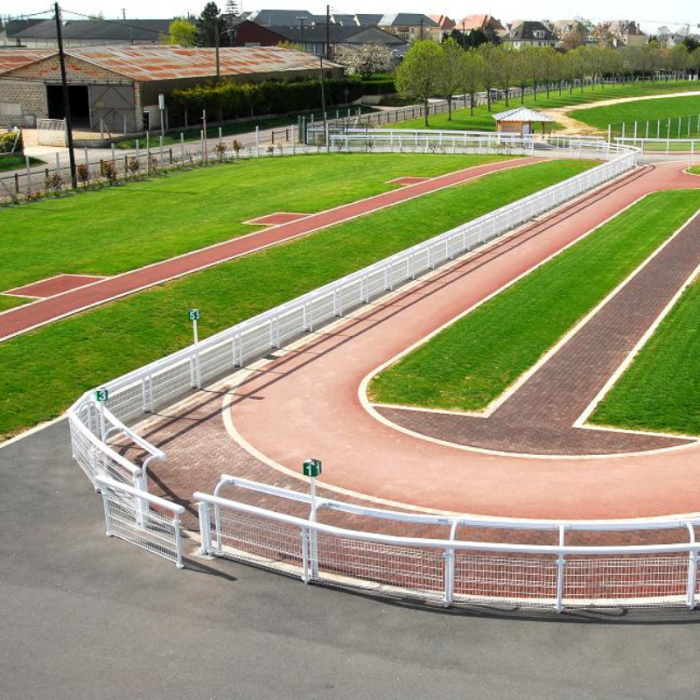
Source: tekide.com
Efficient and safe barrier removal is crucial during emergencies to ensure quick access for emergency vehicles and personnel. A well-planned removal strategy, coupled with appropriate barrier design, can significantly reduce response times and improve the chances of a positive outcome. This section details procedures and best practices for seamless emergency response.
Effective barrier removal during emergencies requires a coordinated effort and pre-planned procedures. This includes clear communication channels, designated personnel, and easily accessible removal tools. The design of the barriers themselves plays a vital role in simplifying this process.
Barrier Design for Emergency Access
Barrier design should prioritize ease of removal and quick access for emergency vehicles and personnel. This can be achieved through several design features. For example, barriers might incorporate quick-release mechanisms, allowing for rapid dismantling. Sections could be designed to be easily detached or folded, minimizing the time required for removal. Consideration should also be given to the weight and size of barrier sections, making them manageable for removal by a small team. Furthermore, the placement of barriers should avoid obstructing essential access points for emergency vehicles, such as fire exits or ambulance access routes. A good design will incorporate designated access points that can be easily cleared. Imagine a system where certain sections of a barrier are hinged or easily removable, creating a quick access point for ambulances.
Emergency Barrier Removal Procedures, Crowd control safety barriers
A detailed, step-by-step procedure for barrier removal should be established and communicated to all relevant personnel. This procedure should articulate the roles and responsibilities of each team member, the tools required, and the sequence of actions to be taken. For example, a designated team leader might oversee the operation, coordinating the removal with emergency services. Other team members could be responsible for specific tasks such as detaching barrier sections, clearing debris, and ensuring the safety of bystanders. Regular training and drills should be conducted to ensure that all personnel are familiar with the procedures and can execute them efficiently and safely under pressure. The procedure should also address potential complications, such as damaged barriers or unexpected obstacles.
Communication Protocols for Barrier Removal
Clear and effective communication is essential throughout the entire process. This includes establishing communication channels between security personnel, emergency services, and the public. Before an event, clear signage indicating emergency access points and barrier removal procedures should be visible to both security and the public. During an emergency, clear and concise communication is vital. For instance, designated personnel might use two-way radios or other communication systems to coordinate barrier removal efforts. This ensures everyone is informed about the situation and knows their role in the process. Public announcements should be made to inform people about the emergency and the need to clear the area. This could involve using public address systems or other methods of communication. Post-event debriefings are essential to identify areas for improvement in the communication and barrier removal procedures.
Closure
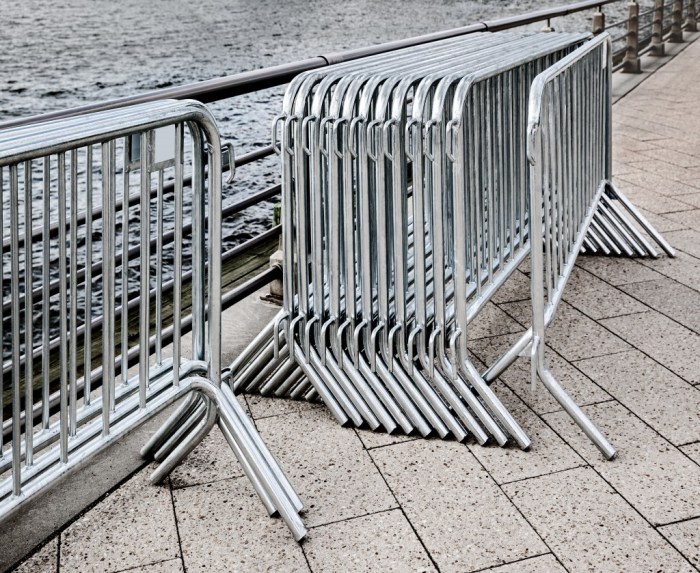
Source: vipcrowdcontrol.com
Successfully managing crowds requires careful planning and the strategic use of crowd control safety barriers. By understanding the different barrier types, their optimal placement, and relevant safety regulations, you can significantly reduce risks and create a safer environment for everyone. Remember, effective crowd management isn’t just about preventing incidents; it’s about fostering a positive and secure experience for attendees. This guide provides a solid foundation for achieving that goal. Always prioritize safety and adapt your strategies to the specific context of your event.
